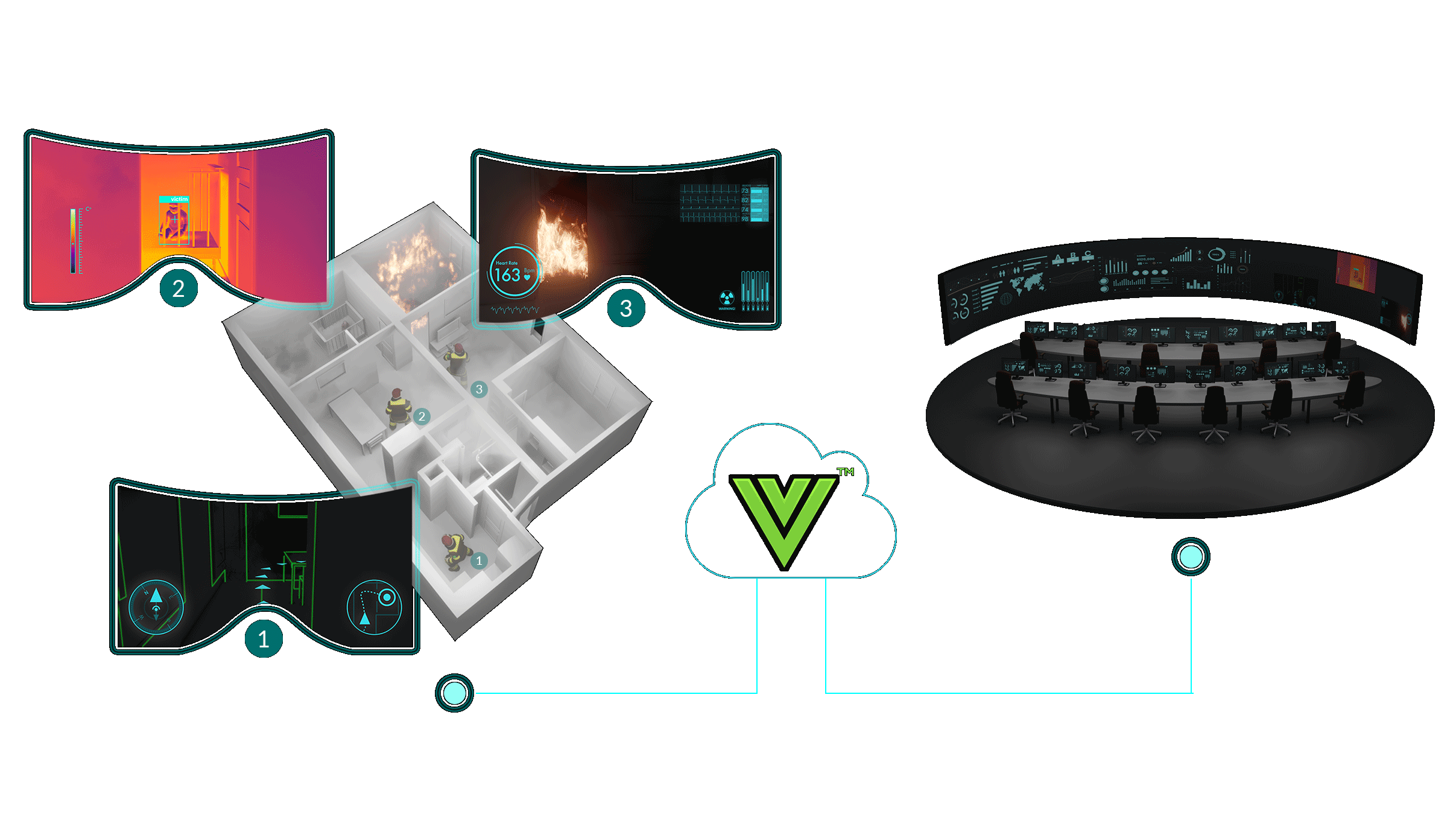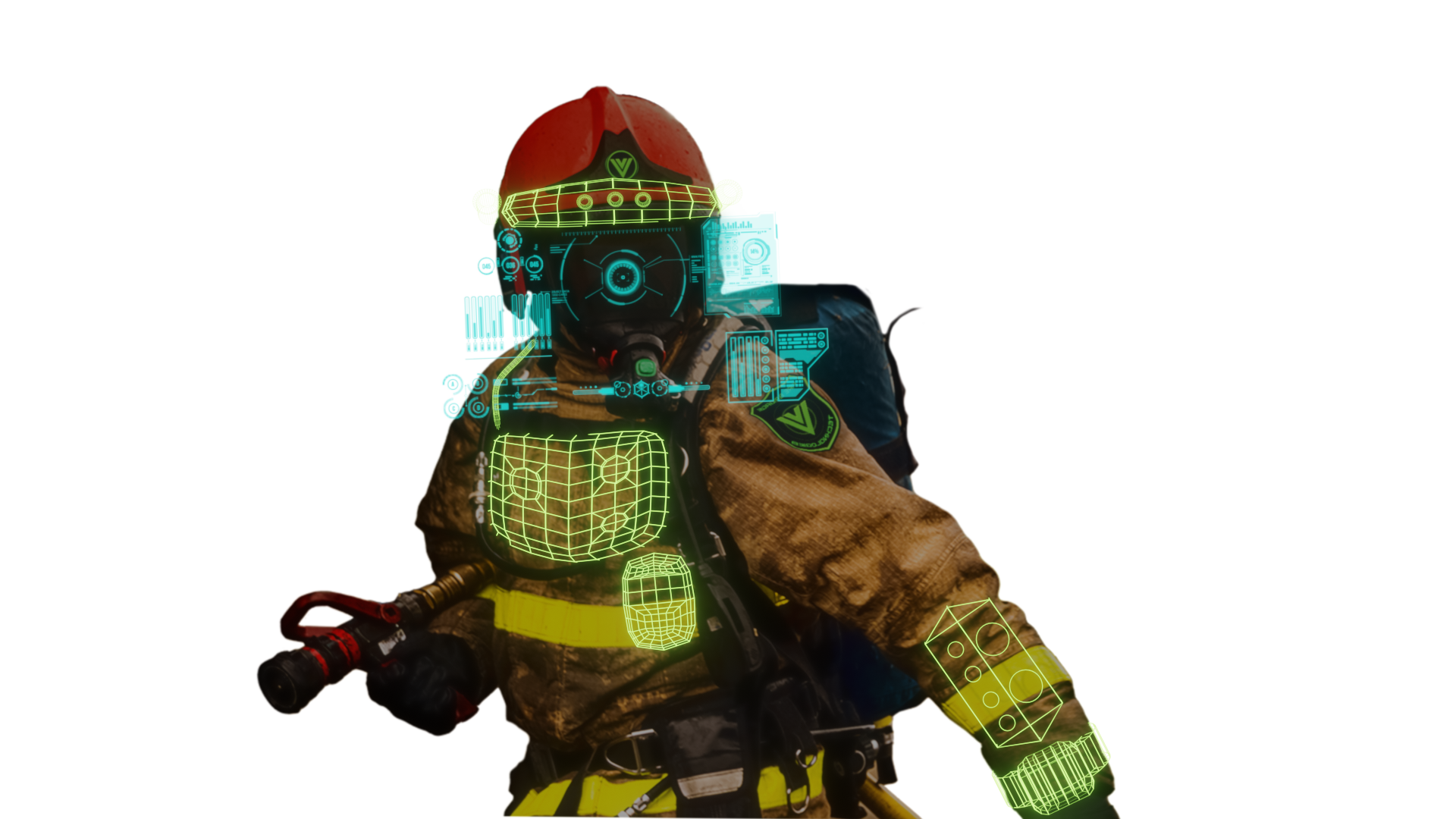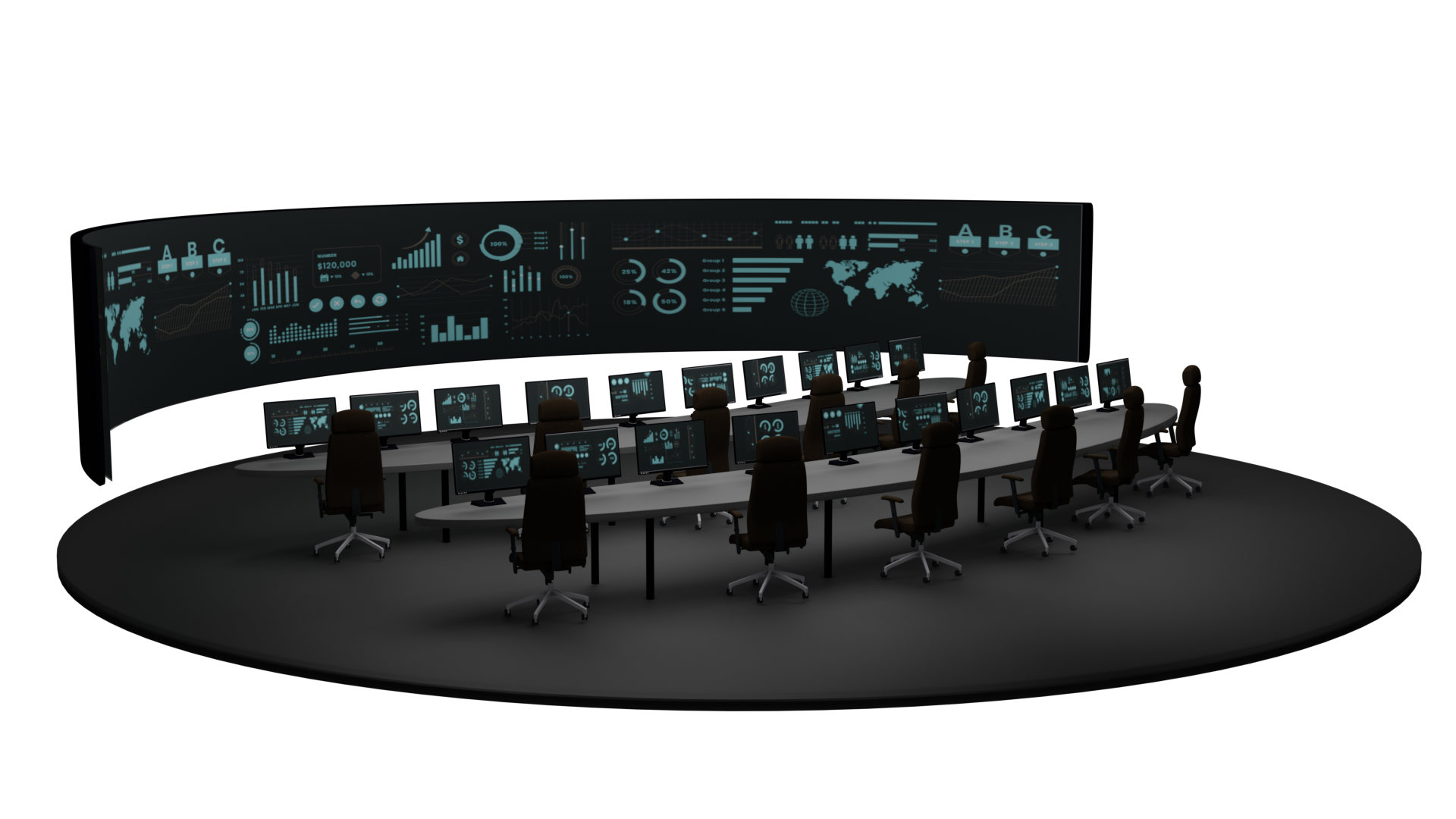Innovators are changing the world.

Nowadays, data intelligence is being added to nearly everything in daily life: from phones, watches, vehicles to home systems. The firefighting profession is no exception. Today’s emergency response community is entering an era where the new technology is coming to action as a Smart Firefighting solutions.
Firefighting is inherently dangerous and has special, unique challenges. It directly involves activities and events where actions determine whether someone lives or dies. It includes the civilians, firefighters and other emergency responders themselves.
The firefighting profession encompasses a broad range of activities that go well beyond fighting a fire in a typical structure. Firefighters usually respond to all emergencies and extremely issues. It includes medical events, vehicle crashes, fires, structural collapse, search and technical rescue, maritime and aircraft rescue, as well as structural firefighting.
The action place usually is chaotic, with dynamically changing conditions that include rapid, difficult-to-predict challenges. It is obvious that if the rescuers safety and efficiency can be improved by technology it should be done.
Fire Brigade Technologies team like all firefighter’s technology innovators are turning their site on improvements that can be made in the field of firefighting. Our mission is helping firefighters do their jobs more efficiently and safely. We are emerging technologies currently being employed in IT, military, health care, manufacturing, and other emergency and commercial fields.
Data Driven approach

Describing Smart Firefighting it is also important to include all duties within firefighter’s scope of responsibilities. All phases are important, with focus on pre-event, during an event, and post-event issues. Time constraints are the greatest challenge during an event, while pre-event (prevention, education, pre-planning) and post-event ( investigation, salvage) allow more time for actionable consideration.
Smart Firefighting technology in general produces huge amount of data that can help the fire services to assess risks before, during and after incidents. Modern technology and the data generated from sensors should help the fire service be more efficient, effective and safe from harm.
Everything about Smart Firefighting revolves around three primary realms of focus: gathering data, processing data, and delivering data.
- Gathering data requires sensors that collect and harness the data. With the proliferation of the IoT, firefighter’s equipment is becoming increasingly sensor-rich. It means that this field is pretty easy to implement in real life.
- Processing data is sometimes relatively straightforward conversely, at other times it can be very complex. This is the process that makes the data useable and relevant for firefighters and emergency rescuers. Especially it became complicated when the real time processing in a harsh environment is needed.
- Delivering data, also referred to as targeted decision-making, is the cruicial component of the Smart Firefighting ecosystem. It is essential to correctly process the data and deliver it only to those who need it, the way they need it, when they need it, and nothing more. In the time-critical environment of the fireground, it’s paramount that firefighters are not overloaded with superfluous details.
The final communication must be simple, precise, and relevant to be of value. Targeted decision-making is an essential characteristic of Smart Firefighting. At best, drowning in data accomplishes nothing. At worst, it is a dangerous distraction that can compromise safety and final effectiveness.
Technology solutions
Optimal situational awareness on the firefield means combining knowledge of past events with present circumstances in context, and then anticipating future events. It improves efficiency and safety for all involved.
Optimal awareness requires a high degree of communication and coordination throughout the chain of command, from firefighters, to company officers, the incident commanders and dispatchers.
This is what Command CenterTM cloud solution is designed for. We are sure, that properly designed technology can help minimalize the factors working against situation awareness. Including incomplete, inaccurate, or uncertain information, absence of information prioritization or such types of typical difficulties like using the radio with breathing apparatus.
Smart Firefighting helps overcome some of these hurdles by using best technology solutions for each of the problems.
Below are mentioned some examples of important informations which may be used by the future Smart Firefighters:
- GPS tracking of team member locations when deployed to a fire
- Physiological monitoring of vital signs from firefighters
- Overlays of structural information to help navigate a situation more safely
- Visualization of the setting to offer alternative routing
- Infrared imagery to give more insight into what is happening around
- Monitoring of heat flux measurements to predict flashover conditions
- Personal safety systems that can monitor for exposure to dangerous chemicals
- Augmented Reality powered by AI systems
- and many others systems
Challenges to overcome
Of course Smart Firefighting is not without its challenges. It is possible to receive too much information and data, overwhelming incident comanders and firefighters on the ground. Hence we – as all firefighter’s technology researchers – are looking for ways to store, share, and prioritize information in the most effective ways without creating “task saturation” for those receiving the data.
The new wearable technology must be properly miniaturized so that it does not add weight to the already-heave PPE system with which firefighters work, often already reaching the huge range of weight.
Considerations must also be made into how these technologies can be powered and maintained while encountering some of the most extreme conditions on earth.
Additionally, the value of the new technology must be proven, to be really worth it to use for the firefighters and emergency rescuers themselves. With proper training and explanation it is required to ensure that they will begin to adopt the new devices and solutions properly.
Considerations must also be made into the cultural factors and limitations that differ in fire stations across all the countries over the world. Departments in larger, more affluent communities are more likely to explore new technologies that are able improve efficiency and safety for firefighters. Departments in smaller communities with less financial resources must first meet their basic requirements before looking at new technologies and equipment.
Finally firefighting, unlike other fields employing smart technology, lacks a world or although country centralized body, focused specifically on researching, developing, and deploying new Smart Firefighting technologies. Firefighting would benefit from a centralized effort in researching and deploying new technologies designed specifically for firefighting and first response.
Thoughts
What is important for the fire departments today to do to adopt Smart Firefighting strategies is a developing and being open to new opportunities.
So while the development and adoption curves for Smart Firefighting may be slower than other fields, that is still better to get small progress than no progress. It is obvious that emerging smart technologies, deployed in the proper ways with the correct considerations, have the potential to preserve property and life by offering more useful data on-the-scene.
And all that described above is what we as the Fire Brigade Technologies team love to work on directly.
That would be enough for a general introduction about the Smart Firefighter technology of the future.
The next article (coming soon) will show specific system functionalities and use cases in real rescue operations we – as a firefighters – encounter every day.
Sources:
https://smartfirefighter.tech/knowledge-base/
https://www.eso.com/blog/smart-firefighting-improves-provider-safety/
https://www.nfpa.org/-/media/Files/Code-or-topic-fact-sheets/SmartFFFactSheet.ashx
https://higherlogicdownload.s3.amazonaws.com/SFPE/93e7d31c-6432-4991-b440-97a413556197/UploadedImages/Special_Interest_Group/Fire_Service/q32019fire_protection_engine.pdf
https://www.nfpa.org/-/media/Files/News-and-Research/Resources/Research-Foundation/Current-projects/Smart-FF/SmartFFRealizingTheVision.ashx
https://www.ncbi.nlm.nih.gov/pmc/articles/PMC4591136/

